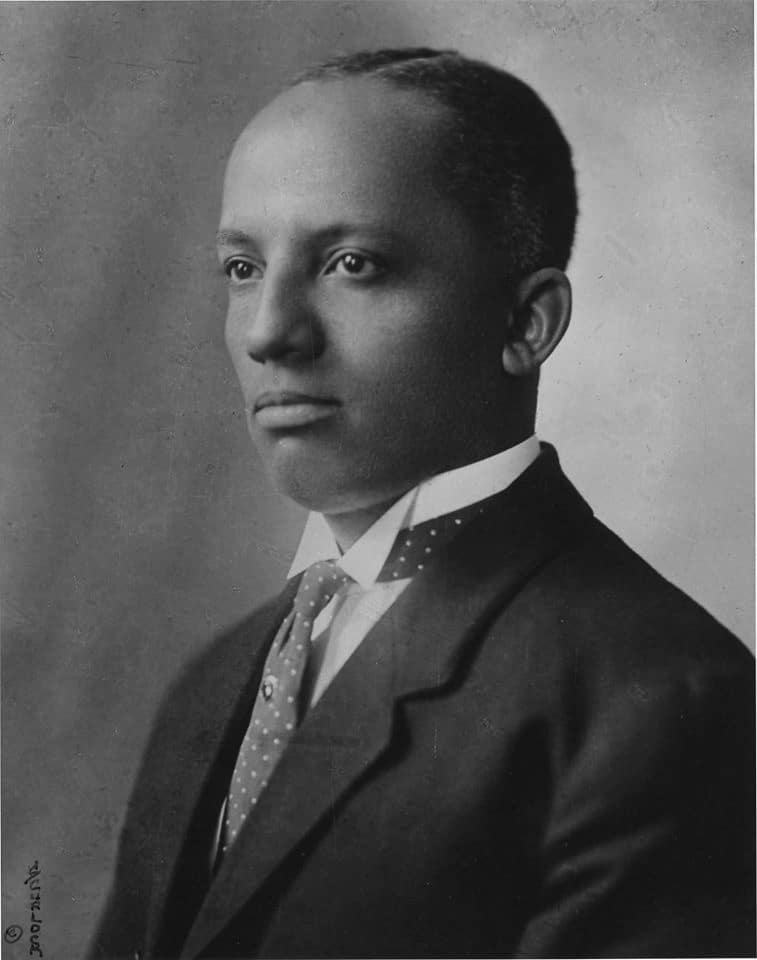Did you know a teacher started Black History Month?
It’s only appropriate, then, that we compile a list of unique Black History Month resources for educators.
But first, let’s go back to the beginning. It all started in 1915 with Carter G. Woodson.
“Woodson was dedicated to making African American history accessible to the everyday person. He wanted African Americans, and all Americans, really, to know the African American story and to see themselves in it because representation is power.”
— Noelle Trent, National Civil Rights Museum
Born to illiterate parents who were formerly enslaved, Woodson helped out on the family farm. As a teenager, he helped support his family by working in the coal mines of West Virginia.

Education was everything to Woodson. His formal learning was intermittent, and he entered high school at age 20 and graduated two years later.
Woodson became a teacher and then a school principal. He pursued higher education and became the second African American person to earn a doctorate degree at Harvard University.
An esteemed educator and author, Woodson paid his dues to be a part of the American Historical Association, but he was barred from attending their conferences. History, as he saw it, failed to include the African American experience.
Resolved to include African American history in education, Woodson and a group of African American men founded the Association for the Study of Negro Life and History (now called the Association for the Study of African American Life and History). This provided African American scholars with research and publication outlets.
“Seize the opportunity to honor the too-often neglected accomplishments of Black Americans in every area of endeavor throughout our history.”
— President Gerald Ford
A decade later, Woodson initiated Negro History Week to coincide with the birthdays of Frederick Douglass and Abraham Lincoln. In 1969, students and educators at Kent State University proposed a full month. Seven years later, President Gerald Ford publicly recognized this proposal, and finally, in 1986, Congress designated the month of February as National Black History Month.
And, to think, it all started with a teacher.
As you peruse the following list, remember to incorporate these resources throughout the year. Edutopia offers excellent advice on how to make your classroom more culturally responsive, and Michigan Virtual offers a free, SCECH-bearing professional development course called “Anti-Racism and Social Justice in Teaching and Leadership” to incorporate this mindset in your teaching.
Below, you will find unique Black History Month resources for teachers and a few special Michigan-specific resources to use in face-to-face or virtual classrooms.
Thank you to Michigan Virtual Instructor Marie McDonald; Diversity, Equity, and Inclusion (DEI) Coach Tanya Cross; Director of Instruction Andrea McKay; and Assistant Director of Continuous Learning Emily Sicilia for contributing to this list. Additionally, a big thanks to DEI Committee member Terence Wilkerson and BRIGHT podcast host Nikki Herta for reviewing this material!
Please note: These resources have not been thoroughly vetted, so please use your best judgment. Are we missing something? Let us know!
Black History Month Resources
- Black History Month slideshow
(Michigan Virtual Social Studies Instructor Marie McDonald teaches African American History and has generously provided this slideshow. Teachers can use any of this material in their courses!) - Youth Speak virtual stage at The Wright in Detroit (video contest)
- Separate but equal case in Michigan (audio and text)
- A Michigan resort town for African Americans (podcast)
- Historically Black (podcast)
- Swing dancing and jazz (primary source set)
- Digital collections at the Library of Congress (primary sources list)
- Exhibits and collections (primary sources list)
- The only African American military pilots in WWII (book)
- African American artists and projects for the classroom (article)
- 4 Black History Month must-haves (article)
- The pioneering heart surgeon and Idlewild founder (article)
- Documentaries to watch (video)
- 10 Black History Month classroom ideas (video)
- The first African American women army corps unit deployed overseas in WWII (videos, photos)
- Portraits of African Americans (photos)
- Negro Leagues Baseball oral history (audio)
- The Civil Rights Act of 1964 (teacher guide)
- NEA Black History Month (lesson plans)
- The historical roots of hip hop (lesson plan – register for free to access)
- Free classroom posters (printables)
- Black History Month coloring pages (printables)
- Trans-Atlantic slave trade (interactive)
- Segregation and the Life of Henrietta Lacks learning lab (interactive)
- Rosa Parks virtual student workshop (grades 5-8) (interactive)
- Cut-and-paste Civil Rights Movement project (activity)
- One of the first African-American women to receive a patent (activity)
- Comparing Civil War recruitment posters (activity)
- Black History Month journal prompts (activity)
- Black History Month crossword puzzle (activity)
- Fannie Lou Hamer and voting rights (activity)
- Jeopardy board: African American firsts in sports (activity)
- Anti-racism resources for all ages (Padlet)
- The growing diversity of Black America (report)
- 10 ideas for teaching Black History Month (PDF)
- Books to add to your inclusive library (list)
- Shareable social media resources (list)

